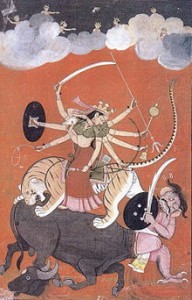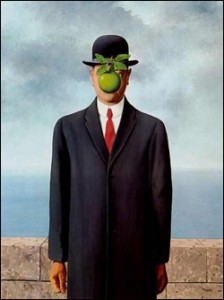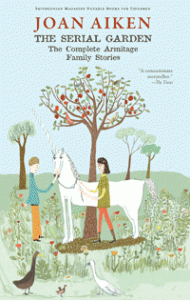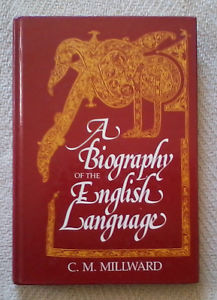

What: Cold Comfort Farm by Stella Gibbons was published in 1932. It’s a send-up of all the books of the time romanticizing the rural life. It references many of the popular novels of its time, adding a layer of appreciation if you’re familiar with that work, but it isn’t necessary to know that much order to enjoy it.
Who: People who enjoy English humor at its subtlest will particularly enjoy Cold Comfort Farm, as will those familiar with the literature of the time. And, if you are a woman who has ever been hit on by a particular type of academic male, you will recognize Mr. Mybug and glory in the very very accurate portrayal of a man soaked in nature’s fecund blessing.
Why: If you’re considering writing humor, this is an excellent book to take a look at for its myriad of different strategies, including a very accurate send-up of the ways dialect are often portrayed. At the same time, it remains an interesting and engaging story.
When: Read this when you want a little humor and charm. Read it when you have been too long among the self-important, and need to see them skewered a little.
Where and how: Don’t read it in the woodshed; there’s something nasty in there.
#sfwapro
...
 Not the movie. No, that was an okay movie, but this book? It’s pure gold. It’s beautiful. It’s enchanting. You should read it.
Not the movie. No, that was an okay movie, but this book? It’s pure gold. It’s beautiful. It’s enchanting. You should read it.
What: The Last Unicorn is, as you would expect, the story of the last unicorn. She must find out what has happened to the other unicorns, aided by a fraudulent magician, a fierce butterfly, and a would-be Maid Marian. You’ve formed a story in your head from reading that last sentence. The book is nothing like that. It’s better.
Who: I do not think anyone should call themselves a fantasy writer that has not read this. I’m sure there are reasonable exceptions. But I’m not seeing any of them.
Why: Read this for characters that will tangle themselves up in your heart and never let go. Read it for Beagle’s skill with prose, the sly humor, the sheer beauty.
When: Don’t read this when you are feeling insecure about your own writing, because it will only make it more so. Read it for inspiration as well as entertainment.
Where and how: Copy passages out and try to figure out how Beagle DID that. How the butterfly enchants us in only a few sentences. How the Bull menaces in even less space. (Be aware that Beagle did write about some of these characters again; they appear in novelette “Two Hearts,” which I only see available in The Nebula Award Showcase 2008 and The Year’s Best Science Fiction, Volume 24.
#sfwapro
...

What: Pogo is a comic strip. You can find plenty of compendiums for sale or you can seek out samples on some of the online sites devoted to Walt Kelly’s work.
Who: Writers interested in twisting language to their own ends should seek out Pogo, in whose pages it is beautifully wonderfully made coherent gibberish that delights the ear and cries out to be read aloud. Here, for example, is a Christmas carol that’s been Pogo-fied:
Deck us all with Boston Charlie,
Walla Walla, Wash., an’ Kalamazoo!
Nora’s freezin’ on the trolley,
Swaller dollar cauliflower alley-garoo!Don’t we know archaic barrel
Lullaby Lilla Boy, Louisville Lou?
Trolley Molly don’t love Harold,
Boola boola Pensacoola hullabaloo!Bark us all bow-wows of folly,
Polly wolly cracker ‘n’ too-da-loo!
Donkey Bonny brays a carol,
Antelope Cantaloupe, ‘lope with you!Hunky Dory’s pop is lolly,
Gaggin’ on the wagon, Willy, folly go through!
Chollie’s collie barks at Barrow,
Harum scarum five alarum bung-a-loo!Dunk us all in bowls of barley,
Hinky dinky dink an’ polly voo!
Chilly Filly’s name is Chollie,
Chollie Filly’s jolly chilly view halloo!Bark us all bow-wows of folly,
Double-bubble, toyland trouble! Woof, woof, woof!
Tizzy seas on melon collie!
Dibble-dabble, scribble-scrabble! Goof, goof, goof!
Why: Read it because of the way gentle humor, sharp political insight, and sometimes grave disappointment in the state of America have all been combined in the lives of a cast of characters that manages to combine charm and cynicism.
When: Read it when you want some new characters to people the chambers of your head: earnest Pogo, the scowling Porkypine, too ingenious for his own good Albert the Alligator, and wanna-be trickster Churchy Lafemme.
Where and how: Read it somewhere that you can laugh freely and smile to yourself or even read a scrap (maybe more) aloud just to hear the cadences.
#sfwapro
...
 This is not so much a you should read this particular book, as a you should read something like this, and you should read it in a very particular way.
This is not so much a you should read this particular book, as a you should read something like this, and you should read it in a very particular way.
What: 365 Goddess: A Daily Guide to the Magic and Inspiration of the Goddess by Patricia Telesco presents a goddess a day to take you through a year of them. Each is briefly described along with her themes and symbols and ways to remember that goddess during the day.
Who: Anyone searching for creativity should pick up this practice, whether or not you use this book. Find something that provides a daily seed — perhaps the I Ching, or Tarot cards, or inspirational poetry — and make meditation on it part of your daily practice.
Why: Because some daily touchstone like this gives additional structure and depth to your day. And, with this particular book, you will find fresh stories and influences.
When: Early in the day. Open it up to today and look to see what goddess is invoked. Reflect on what she stands for, her story, her associated colors, animals, fruits, flowers, and traditions.
Where and how: Read it mindfully, not skimming. If each day you focus on something like this, it will spur stories and ideas. You’ll notice things that you wouldn’t have noticed otherwise. If a figure pulls you, read further, deeper, wider about that goddess and see what stories she brings you.
#sfwapro
...

I read it for a class, one of the brief ones squeezed in between semesters, a one-credit class called On the Road, which focused on (naturally enough) stories of the road, including Kerouac’s book.
What: The Odyssey is the story of Odysseus as he makes his way back through a series of dangerous encounters to his wife Penelope, who is facing off dangers of her own at home.
Who: Anyone who wants to be familiar with one of the fountains so many stories, in so many art forms, are drawn from should read this.
Why: Because it’s a classic. It’s good for you AND it’s a really good story.
When: Read it when you want to return to the bones of writing. Read it in conjunction with Robert Grave’s Homer’s Daughter, which posits a different author for it.
Where and how: Read it aloud, the way it’s meant to be heard. Read it in one of the many good translations that treat it like the poetry it is, such as Robert Fitzgerald’s. Or if you’re privileged enough to know ancient Greek, let it sing to you in that form.
#sfwapro
...

What: Surrealist Games, compiled and presented by Alastair Brotchie is a compedium of games played by members of the Surrealist movement along with illustrations and surrealist quotes. Games include echo poems, provocations, and oral description of objects perceived by touch.
Who: Any writer is the better for a little dose of surreality from time to time, and any forays into the book will yield a few interesting phrases at the least, or perhaps even a whole new mind.
Why: Read it to find some writing games that you can play solo or with similarly-verbally-minded friends. Read it for the equivalent of a poetic whack upside the head. Read it for the creative sparks flung out by its pages.
When: Read it at a time dictated by the roll of a die or the motions of a lizard on the wall.
Where and how: Graze through the pictures and see what inspiration leaps from the paper to your brain. Don’t treat it like a manual, working your way through game 1, game 2, game so on. Instead, let it fall open and see where chance takes you.
Enjoy this writing advice and want more content like it? Check out the classes Cat gives via the Rambo Academy for Wayward Writers, which offers both on-demand and live online writing classes for fantasy and science fiction writers from Cat and other authors, including Ann Leckie, Seanan McGuire, Fran Wilde and other talents! All classes include three free slots.
Prefer to opt for weekly interaction, advice, opportunities to ask questions, and access to the Chez Rambo Discord community and critique group? Check out Cat’s Patreon. Or sample her writing here.
#sfwapro
...

What: The Serial Garden: The Complete Family Armitage Stories by Joan Aiken is a collection of children’s stories written by Aiken. The Armitage family moves through a landscape reminiscent of the England of the Pevensies or Would-Be_Goods and they have the same, non-cloying sweetness to them.
Who: Read this if you’re a MG or YA author looking for inspiration. Or if you’re a parent looking for some solid reading to share with your children..
Why: Read it because Aiken knows how to construct a short story. Look at how deftly she weaves in elements, tying them all up in endings that are unpredictable but ineffably right.
When: Read it in the evenings, as befits fairy tales.
Where and How: Read it if you’re in the mind for a little gentle silliness and the ghost of a governess conducting midnight lessons.
#sfwapro
...

Who: Read this if you’re a woman, whether or not you call yourself a feminist. Read it if you’re a man trying to write realistic women, because the structures Griffin talks about are ones that affect all of this, but particularly women. Read it if you don’t mind some poetry mixed in with your thinking.
Why: Read this to reexamine the words and metaphors we use to describe both nature and women, to understand the attitudes behind the language.
He says that woman speaks with nature. That she hears voices from under the earth. that wind blows in her ears and trees whisper to her. That the dead sing through her mouth and the cries of infants are clear to her. But dfor him this dialogue is over. He says he is not part of this world, that he was set on this world as a stranger. He sets himself apart from woman and nature.
And so it is Goldilocks who goes to the home of the three bears, Little Red Riding Hood who converses with the wolf, Dorothy who befriends a lion, Snow White who talks to the birds, Cinderella with mice as her allies, the Mermaid who is half fish, Thumbelina courted by a mole.
When: Read this when you want to be lulled by words out of your own body and into the material forms of tree and earth and shell.
Where and how: Read this near a window, where you can look out at trees or sky or mountains or water.
#sfwapro
...

What:Translation is an art form, and Coleman Barks’ translation does the poet justice. Rumi was a 13th century Persian mystic poet who may well be the most popular poet in America, given how often lines of his poetry show up on Pinterest.

Who: I cannot think of anyone who would not benefit from this book, particularly if you like poetry.
Why: Read this if you’re interested in simple language presenting wild and wonderful ecstasy. Read it if you’re wondering where you belong in the world or what you should be doing in it. Read it for lines that will linger with you.
When: Read this when you are first falling in or out of love. Read it when your soul is thirsty.
Where and how: Read this in intervals, taking time to savor each piece and turn it over in your head.
#sfwapro
...

Who:Read this if you are a writer who likes to know what’s built into the words you’re using, what they say about their circumstances as well as what resonances they add for the knowledgeable. Read it if you love the minutiae of language, all the little “who would have thought” and “Although unlikely” facts that get seeded into long and drifty conversations, like the fact that Indo-European had three numbers: singular, plural, and dual.
Why: Read this so you can use words both more efficiently and more artfully. SO you know how the literary tradition you are working for and against, bound inextricably within, has been affected by linguistic change and created its own pressures to change in turn.
When: Read this when going among bores, for it will arm you with facts with which any recitation of X-Files plots or sports trivia can be met. Read this when you want something a little academic, with that cleansing flavor of self-improvement that the scrub of dry details can bring. Read it when you’re cramming for a test that involves volcabulary.
Where and how: Read this sporadically, tucking facts away, or with a notebook in hand. Read it for a class that takes you through centuries of linguistic change, showing you how history is tucked into every Vocabulary lesson.
#sfwapro
...
Want access to a lively community of writers and readers, free writing classes, co-working sessions, special speakers, weekly writing games, random pictures and MORE for as little as $2? Check out Cat’s Patreon campaign.

"(On the writing F&SF workshop) Wanted to crow and say thanks: the first story I wrote after taking your class was my very first sale. Coincidence? nah….thanks so much."



This site is protected by reCAPTCHA and the Google Privacy Policy and Terms of Service apply. This site is a participant in the Amazon Services LLC Associates Program, an affiliate advertising program designed to provide a means for sites to earn advertising fees by advertising and linking to Amazon.com.